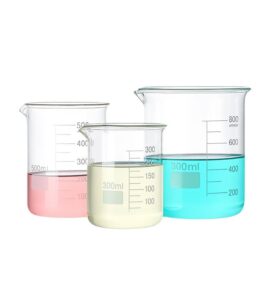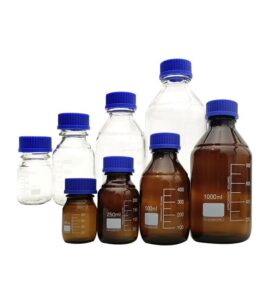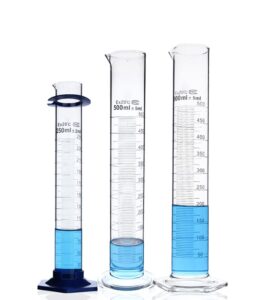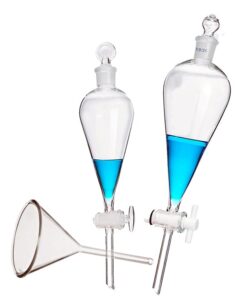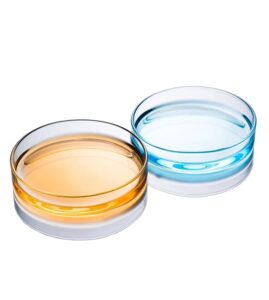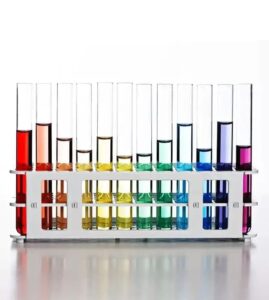Curious about how scientists achieve near-perfect precision in their experiments? Intrigued by the sight of the beautifully-shaped glassware decorating lab benches? The key to the mystery lies in mastering the use of a very special piece of laboratory glassware – the volumetric flask. But, how can one make the best use of these flasks to achieve high precision?
Volumetric flasks are designed to measure and hold precise volumes of liquids. Their unique design and careful handling can enhance accuracy in quantitative lab work. Learning to use them effectively is a step towards mastering precision in the lab.
Excited to learn the ins and outs of using a volumetric flask? Let’s step into the world of precision together.
Understanding the Volumetric Flask
Before diving into how to use it, let’s get to know the volumetric flask a bit more. These flasks are made from borosilicate glass, designed to contain a precise volume of liquid at a specific temperature. They come in various sizes and each flask has a graduation mark, indicating the volume it holds when filled to that point.
A Step-by-Step Guide to Using a Volumetric Flask
Using a volumetric flask might seem challenging at first, but with the following step-by-step guide, you’ll become an expert in no time.
- Cleaning: Rinse the flask with distilled water to ensure it’s free from any previous residue. If the flask was used with a reactive substance, you might need to clean it with an appropriate solvent.
- Adding the Solute: Weigh out the exact amount of solute required for your experiment and add it to the flask. Use a funnel if necessary to prevent spills.
- Adding the Solvent: Gradually add your solvent into the flask, but be careful not to fill it up to the graduation mark just yet. Mix the solute and solvent to ensure they’re well combined.
- Filling to the Mark: After mixing, continue to add the solvent slowly until the bottom of the meniscus (the curve formed by the liquid at the surface) aligns with the graduation mark. Remember, this should be observed at eye level to avoid parallax errors.
- Securing and Mixing: Once the flask is filled to the mark, secure it with a stopper and invert it several times to ensure the solution is uniformly mixed.
Common Mistakes and How to Avoid Them
Even with the best intentions, mistakes can happen. Here are some common errors when using a volumetric flask and how to avoid them:
- Overfilling: Overfilling the flask beyond the graduation mark can lead to inaccurate concentrations. If you accidentally overfill, you’ll need to discard the solution and start over. It’s better to add the solvent slowly as you near the mark.
- Improper Mixing: Failing to mix the solution thoroughly can result in uneven concentrations. Ensure you invert the flask several times to mix the solution completely.
- Incorrect Reading of the Meniscus: Parallax errors can occur when the meniscus is not read at eye level. Always make sure you are looking straight on at the graduation mark.
Tips for Maintaining Your Volumetric Flasks
Maintaining your volumetric flasks in top shape is essential for ensuring accuracy in your measurements. Here are some tips:
- Cleaning: Always clean your volumetric flask after use to avoid contamination. Ensure it’s dry before storing.
- Storage: Store your volumetric flasks in a safe place where they are unlikely to be knocked over or damaged. They should be stored upright, not on their side.
- Handling: Handle your volumetric flasks with care. They are delicate and can be easily damaged if dropped or mishandled.
Additional Considerations Worth Noting
While we’ve covered the basics of using and maintaining a volumetric flask, there are a few additional considerations worth noting.
Temperature Considerations
When using volumetric flasks, remember that they are calibrated to contain a specific volume at a particular temperature (usually 20 degrees Celsius). If your lab conditions are significantly different, this could lead to minor discrepancies in measurements due to the expansion or contraction of the liquid and the glass.
Flask Sizes and Selection
Volumetric flasks come in various sizes, ranging from 1 milliliter to several liters. The size you choose should depend on the volume of the solution you need to prepare. It’s best to use a flask that is close in volume to the solution you need, rather than a much larger one, to maximize accuracy.
When Not to Use a Volumetric Flask
While volumetric flasks are incredibly useful for preparing solutions and dilutions, they are not suitable for all lab tasks. They are not designed for reactions or heating, and they should not be used as storage containers. If you need to perform a reaction or store a solution for an extended period, other types of lab glassware, like beakers or Erlenmeyer flasks, might be more suitable.
An Insurmountable Gap in Safety
Safety is paramount in the laboratory environment, and personal protective equipment (PPE) should always be used when handling laboratory glassware, including volumetric flasks.
Personal Protective Equipment (PPE)
Before starting any lab work, ensure you are properly dressed with the correct PPE. This can include:
- Lab Coat: A lab coat provides a barrier between your skin and any potential chemical spills or splashes.
- Gloves: Gloves are important for protecting your hands from harmful substances. Ensure you are using the appropriate type of gloves for the chemicals you are handling.
- Eye Protection: Safety glasses or goggles are essential to protect your eyes from splashes. Remember that not all eyewear is safety rated, so ensure you are using approved safety glasses.
Safe Handling of Glassware
When handling volumetric flasks and other glassware:
- Inspect the Flask: Always check your flask for any damage like chips or cracks before use. Damaged glassware can break during an experiment and should not be used.
- Use Tools: If your flask is filled with a hot solution, use appropriate tools like tongs or heat-resistant gloves to handle it.
- Clean Up Spills: If a spill occurs, clean it up promptly following your lab’s safety procedures. If a flask breaks, do not pick up the pieces with your bare hands. Use a brush and dustpan.
Wrapping Up: Mastering the Volumetric Flask
With these steps and tips, you are now ready to make precise measurements using a volumetric flask. Remember, mastering the use of a volumetric flask is not only about following the steps, but also understanding the principles behind its design and use.
Remember that volumetric flasks are not just tools, but the embodiment of precision and accuracy in the lab. Learning to use them effectively will allow you to achieve the best possible results in your experiments, bringing you one step closer to becoming a true scientist. So, why wait? Grab a volumetric flask and start your journey towards precision today!


